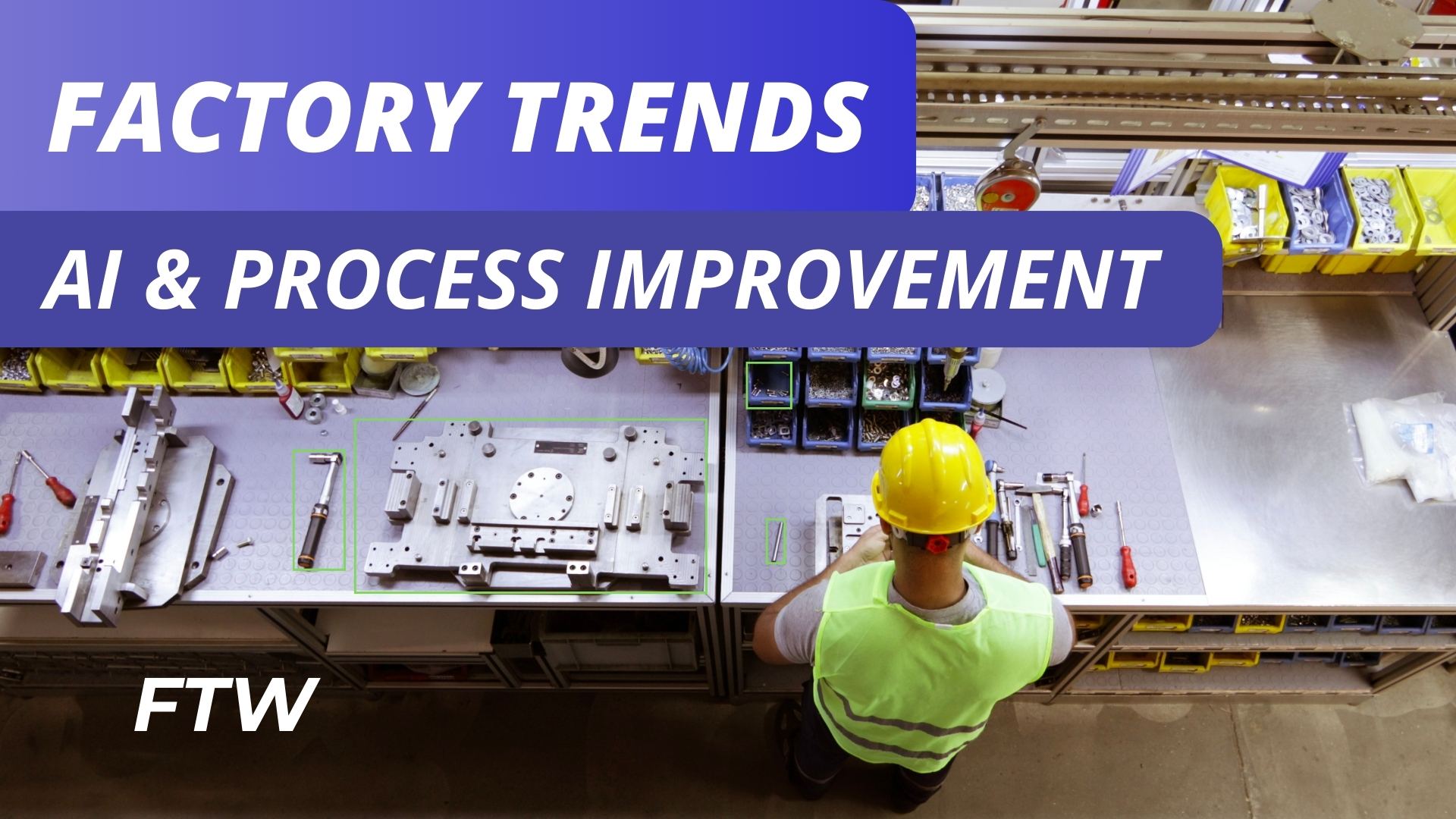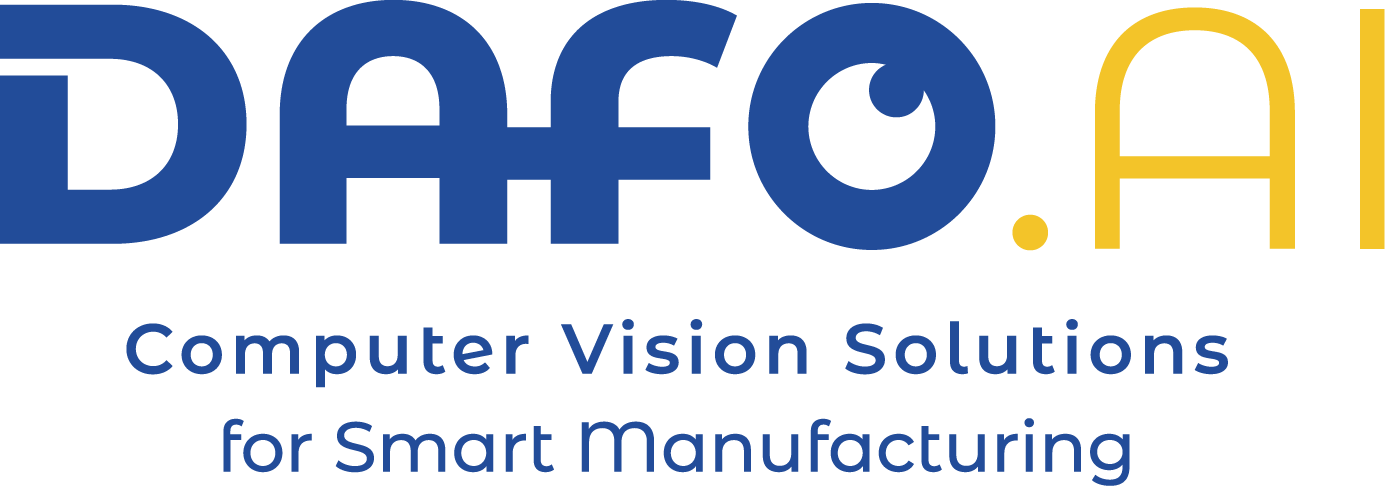
Welcome, Innovative Leaders in Manufacturing and IT! In this edition, we explore one of my favourite lean concepts: quality at the source and AI-assisted Poka-Yoke. Delving into the critical role AI and industrial digitalization technologies play in this area. This approach primarily aims to detect errors, mistakes, or project deviations as early as possible, focusing on enhancing:
- Predictive Quality Control
- Automatic Inspections
- Process Optimization
- Continuous Improvement
Rework and Reinspection Dilemmas
Have you often found yourself redoing or reworking someone else’s output, or discovering defects at the end of a process? The costs incurred in processing the defective item, including scrap and rework, immediately come to mind. A visitor in the Innovation Alley noted, “Sometimes defects remain undetected until they end up in customers’ hands, which might not be a high-cost issue but certainly a significant reputational one.”
Embracing Real-Time Quality Control Technologies
Modern technologies ensure quality right at the source, meaning that quality is assured where work is performed. The ‘source’ can be a person, an assembly kit, a workstation, or a delivery order. Achieving quality at the source can be based on design or process. Sensors and AI systems enable monitoring and real-time quality control through self-checks and verification. This ensures tasks are done correctly the first time with error-proofing methods like poka-yoke.
For example, certain AI-assisted Poka-Yoke prevents moving to the next step if the current one isn’t completed correctly, maintaining quality requirements by design.
Automatic Feedback Technologies
Technologies including coordinate measuring machines, 3D scanning, small sensors, and IoT devices excel in monitoring processes to ensure quality at the source. These devices, connected through REST APIs under TCP protocols, can be wired, USB, or Ethernet-connected.
Technology is pivotal in early defect detection, enabling real-time corrections, and fostering a culture of individual accountability for quality.
Here’s an overview:
- Quality Management Systems (QMS) stand at the forefront, offering a holistic software solution that orchestrates all quality-related facets within manufacturing processes. This system is crucial for ensuring traceability, managing documents efficiently, and overseeing CAPA (Corrective and Preventive Actions), alongside facilitating internal audits.
- Inspection and Metrology Tools, including Coordinate Measuring Machines (CMM), 3D scanners, and machine vision systems, provide precise, real-time defect detection and measurement during production.
- Machine Vision Systems, utilizing cameras and AI-assisted Poka-Yoke features, like Dafo, conduct visual inspections to identify defects, especially in scenarios where high-speed operations or manual inspection prove impractical.
- Automation and Robotics, as these technologies execute tasks with unparalleled precision and consistency, significantly diminishing human error and upholding quality standards across production phases.
- IoT (Internet of Things) and Smart Sensors, through their connected ecosystems, collect and relay crucial real-time data concerning the production process, facilitating trend analysis, failure prediction, and adherence to quality parameters.
- Furthermore, Data Analysis and Big Data Software emerge as key players, scrutinizing vast data volumes to unearth patterns, trends, and improvement avenues, thereby aiding in failure prediction and quality process optimization. Data is the king!
- Lastly, Instant Feedback Systems empower employees to instantaneously report quality issues and make adjustments or seek assistance, embodying the essence of QATS by equipping workstations with real-time reporting and communication interfaces. These technologies not only resonate with lean manufacturing principles by minimizing waste and championing continuous enhancement but also instil a sense of quality ownership.
The Role and Challenges of AI
AI is becoming a game-changer in how we keep up quality. Picture AI as a high-tech helper that spots problems before they even happen. This tool can also keep an eye on machinery, giving a heads-up when something might go wrong, which helps cut down on halts in production. What’s more, it can check products faster and more accurately than ever before, helping ensure everything we make is up to par. Plus, it lets companies tailor-make items without dropping the ball on quality. However, this isn’t without its heartache.
The data AI needs can sometimes be lacking or just not there, and meshing it with current setups is tough and often requires more tech-savvy employees. Let’s not forget the room for questions on ethics and the juggle between relying on AI and human checks. Indeed, AI is opening new doors for top-notch quality, yet, we must step carefully, valuing the shimmers of promise and the mere fact that, well, not all that glimmers is gold. This beyond-the-ordinary path to consistent quality is certainly one of the fresh dynamics in the manufacturing chat and leaders’ networking conversations.
A significant advantage of AI is its ability to alleviate pressure and foster an organizational culture that emphasizes quality over quantity. An anecdote from the “Silicon Valley” series vividly illustrates this. In one episode, the Investor delegates the task of sending his child to bed to Alexa, using technology to avoid negative emotions, it is not him sending the child to bed, but ‘the voice in the air’. Similarly, when systems automatically provide feedback, with an AI-assisted Poka-Yoke method, operators experience reduced stress, improving satisfaction levels. These AI-assisted systems empower new operators, boosting confidence and significantly reducing the learning curve.
Connecting Themes: Quality at the Source and XAI
After thinking about how to connect with the previous topic, I realized this discussion ties back to our previous edition on Explainable AI (XAI) and lean manufacturing.
- Emphasis on Quality: Both discussions highlight the importance of quality. Significantly, XAI enhances decision-making in lean processes, while “Quality at the Source” focuses on early quality issue identification.
- Technological Enhancements: Both themes explore using technology to refine manufacturing workflows. XAI improves AI systems’ transparency, and “Quality at the Source” uses technology to address quality issues early.
- Fostering Collaboration: Both emphasize the importance of collaboration in manufacturing success. XAI enhances communication between humans and AI, while “Quality at the Source” promotes cooperation to address quality challenges.
- Continuous Improvement: These topics are part of the broader theme of continuous improvement in manufacturing, serving as tools for refining processes and improving quality.
For more on XAI and its impact on lean manufacturing, refer to our previous newsletter edition linked here.
In our recent Clean Transport Accelerator Program pitch day, a panellist’s question about data ownership and cybersecurity, key challenges of digital transformation and the topics for our next issue.
Conclusion
As we wrap up this edition on “Quality at the Source” with AI and digitalization’s help, we’ve journeyed through enhancing quality control to redefining lean manufacturing. Through predictive quality control, automatic inspections, and process optimization, we’ve seen how modern technologies like Quality Management Systems, Machine Vision Systems, and IoT redefine manufacturing excellence. They enable real-time defect detection and foster a culture of accountability, ensuring quality is embedded from the start.
The role of AI in anticipating and mitigating potential issues, alongside its challenges, including data integrity and ethical considerations, underscores the evolving nature of manufacturing. Our discussion connects deeply with previous insights on Explainable AI (XAI), highlighting the importance of quality, technological enhancements, collaboration, and continuous improvement in manufacturing.
This journey toward quality-centric manufacturing, empowered by technology and lean principles, promises to keep us at the forefront of industrial innovation. Stay tuned for our next issue, where we’ll dive deeper into these critical topics.
Stay subscribed for more in-depth discussions on these pivotal topics.
Until next time, manufacturing innovators!
Daniela Gonzalez, Generalist committed to advancing sustainable technology for a safer, more efficient world.
Gabriel Giani, AI Specialist and Code Captain.
